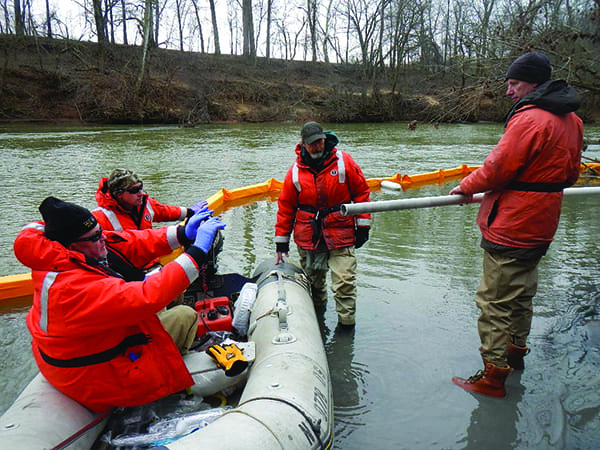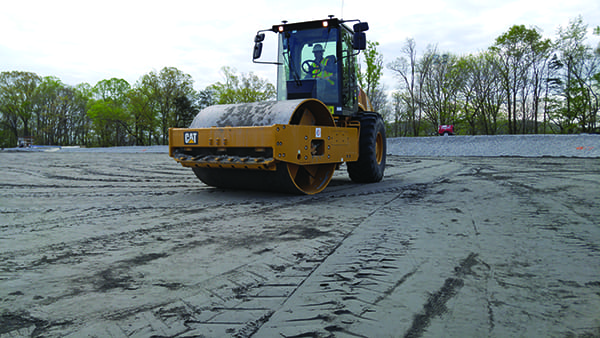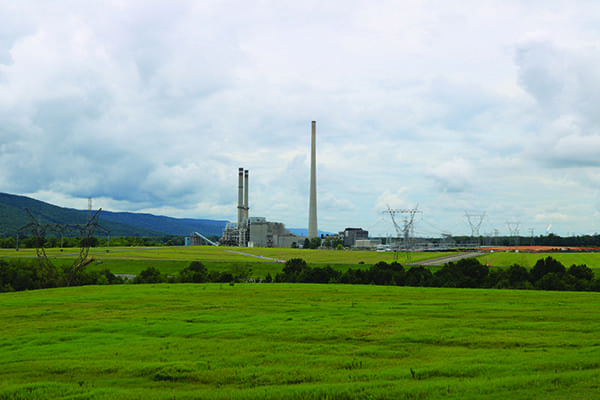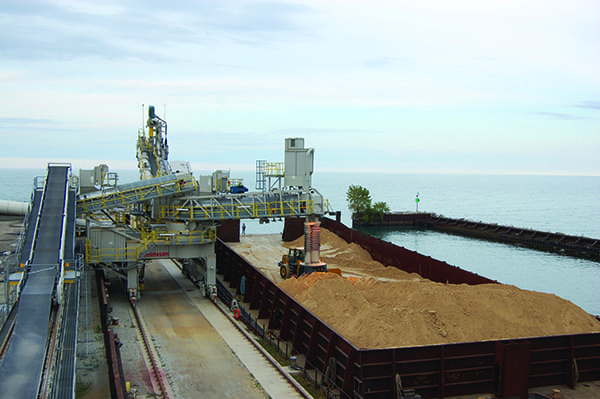Thousands of workers are involved, and billions of dollars are being spent, as U.S. utilities convert and close dozens of coal ash impoundments in an effort to meet government regulations and prevent future environmental disasters.
Power generators operating coal-fired power plants have to navigate a variety of regulations. Management of coal ash, primarily the handling and disposal of coal combustion residuals (CCRs)—the byproducts produced from the combustion of coal or the control of combustion emissions, including fly ash, bottom ash, and other materials that contain mercury, arsenic, and other toxins—is a major issue for these generators.
That’s been particularly true over the past decade after a disastrous spill at the Tennessee Valley Authority’s (TVA’s) Kingston Fossil Plant in December 2008, and another spill from a Duke Energy plant into North Carolina’s Dan River in 2014.
(Check out this slideshow of notable U.S. coal ash spills.)
The Kingston incident—which is still the subject of lawsuits—damaged nearby homes, covered 300 acres, and sent a reported 5.4 million cubic yards of coal ash into the Clinch and Emory rivers (Figure 1). The spill brought calls for better government regulation of CCRs. It took more than six years for the Environmental Protection Agency (EPA) to issue a final CCR rule, establishing technical requirements for CCR landfills and surface impoundments under subtitle D of the Resource Conservation and Recovery Act (RCRA), the nation’s primary law for regulating solid waste.
 |
|
1. A massive spill. This photo of the fly ash spill from the Tennessee Valley Authority’s (TVA’s) Kingston Fossil Plant was taken December 27, 2008, five days after the spill. It shows an area about one mile from the pond that was breached. Courtesy: Brian Stansberry / Wikimedia Commons |
There have been revisions to the rule, with the EPA offering alternative performance standards earlier this year regarding groundwater monitoring and technical certifications of storage and disposal efforts. Lawsuits against utilities—and even against the EPA—have been numerous in recent years as environmental groups, communities, and others have sought solutions to the coal ash problem.
“It is in the best interest of utilities nationwide to recognize this problem, to move the ash into secure concrete areas or lined landfills, and take this problem off the table for the industry,” said Frank Holleman, senior attorney with the Southern Environmental Law Center (SELC), in an interview with POWER. Holleman served as Deputy Assistant Attorney General and Deputy Secretary of Education in the Clinton administration and leads the SELC’s efforts around the disposal of coal ash.
Several U.S. utilities that have faced scrutiny about coal ash disposal have made efforts to shore up ash ponds and enclosures at their facilities. Millions of tons of coal ash have been excavated and removed from sites near waterways and other sensitive areas in recent years.
“I think we’re now just wading into a lot of those tasks at the sites,” said Joe Hoagland, vice president of enterprise relations and innovation at TVA, in an interview with POWER. “Where we’re at in the process, we’re collecting a lot of data so we can make informed decisions. Obviously, the volumes of material we’re talking about is huge. The time frames that we’re projecting at this point, in some cases is decades. That in and of itself is a challenge, to make it manageable over time.”
“The priority for Duke Energy has always been to safely close the ash basins, protecting people as well as the environment,” George Hamrick, senior vice president of coal combustion products for the utility, told POWER. Hamrick said when he joined Duke Energy’s coal group in 2014, as the company was dealing with the Dan River spill (Figure 2), “we dedicated ourselves to improving our coal ash management practices. Previously coal ash management had been spread across multiple groups. I put together an organization, initially about 250 people that we pulled together to lay out our ongoing strategy, [which was] ultimately to replace the basins with dry ash systems, and now to closing the basins. It’s been a phased approach.”
 |
|
2. Testing for contamination. Workers from the U.S. Fish and Wildlife Service are shown here taking core soil samples from the Dan River in North Carolina in February 2014, just days after coal ash from a containment pond at a closed coal plant owned by Duke Energy spilled into the river near Eden, North Carolina. The spill led to criminal charges from the federal government and millions of dollars in fines for Duke Energy. Courtesy: U.S. Fish and Wildlife Service / Wikimedia Commons |
Options for Basin Closures
The EPA in its technical studies to develop the CCR rule found that closure-in-place or closure-by-removal of coal ash were the best options to protect human health and the environment. It also recognized that closure-in-place was the most cost-effective option. Both options have involved scores of personnel at dozens of sites across the country. Estimated basin closure costs range from tens of millions to more than $4 billion, depending on the size of the basin, the closure option, and the time frame for closure, according to an assessment prepared by AECOM for Dominion Energy in 2017, in response to legislation in Virginia. The report, available online at bit.ly/AECOMreport, explored a number of closure options for the utility’s ash ponds.
Closure-in-place involves dewatering the impoundment, stabilizing the CCRs, and installing a cover system to prevent new water sources or other material from entering the basin. Stable geomembrane liners are needed to effect permanent closure of coal ash basins and preserve water quality, reducing the risk of groundwater contamination and adding to structural stability.
Closure-by-removal involves dewatering and excavating the coal ash, then moving it to a lined landfill. Several factors impact this option: the amount of material to be moved, the logistics of drying the material and then loading it into trucks or onto rail cars, and the needed “borrow” material needed to fill in the excavated site.
Duke Energy’s Hamrick told POWER that when “we recognized we were going to be closing all our ash basins, we began engineering replacements.” Hamrick said his group looked at the design of each basin, at plants in North Carolina, Indiana, and Kentucky, and quickly realized that spillways would need to be replaced and embankments strengthened, and that dry handling systems were needed.
“These ash basins used to receive all the water on the site,” Hamrick said. “So now we collect all the water on the site that had previously gone to the ash basins. As you close these basins, you want to make sure you’re protecting the groundwater. We have installed thousands of groundwater monitoring stations. We gather that data on a quarterly basis, monitor it, and see what impacts we’re having.”
Paige Sheehan, a Duke Energy spokesperson, told POWER, “We manage 60 basins across our system and most of our closure work is in North Carolina right now. [In North Carolina] we have 31 basins, two are closed and there is some activity related to the other 29—either excavation, dry fly ash conversion projects, new leachate treatment systems, etc. We plan to excavate 22 of the smaller North Carolina basins and plan to cap the other nine in the state.” Duke Energy has said it plans to close all its coal ash basins by 2029.
“To date we’ve excavated 18 million tons of ash in North Carolina, moving it to dry, lined storage solutions,” Sheehan said. “By early January, all ash we produce across our system will be handled dry. Also across our system, when we complete three ash reprocessing units we’ll recycle more ash that we produce. Today we recycle about 70% of the ash we produce and when those units are done we’ll add ponded ash to the mix.”
Ending Wet Storage
The TVA’s board of directors told the utility’s staff to review and address its systems, controls, and standards related to CCRs after the Kingston spill. After that review, the utility set a goal to convert wet storage of CCRs to dry storage, and to close its ash impoundments.
Scott Brooks, a TVA spokesperson, told POWER: “The fact is, with wet to dry conversion, we committed to this in 2009, before the CCR rule ever came out. We’re a bit unique because we operate in seven states, so we have to work with the states in terms of how each state interprets enforcement of that rule.” Said Hoagland: “Different states interpret things differently.”
TVA is doing its work project-by-project (Figure 3), with each situation subject to technical feasibility, availability of resources, and environmental review. The utility still operates six coal-fired power plants, each with one or more coal ash impoundment areas ranging in size from less than 10 acres to more than 400 acres. Brooks said TVA has 98.9 million cubic yards in active storage areas of as March 2018, with 95.9 million cubic yards in closed areas.
 |
|
3. Dry storage at Kingston. The soil compactor shown here was put to work at TVA’s dry coal ash storage impoundment at the Kingston Fossil Plant. TVA committed to convert its wet storage facilities to dry storage in 2009. The utility has said it will convert all its ponds from wet to dry storage by 2022. Courtesy: TVA |
TVA has announced a completion date of its coal ash ponds from wet to dry storage by 2022, at an estimated cost of $2 billion. As an example, the utility in November announced completion of the ash pond closure project at its Widows Creek Fossil Plant in Alabama (Figure 4), a coal-fired plant that was closed in 2015. Kevin McMillion, manager of Civil Construction Projects for TVA, said that closure project “will ultimately cost TVA about $200 million.”
 |
|
4. Project completed. The TVA in November said it had completed the closure process for its coal ash ponds at the Widows Creek Fossil Plant in Stevenson, Alabama. The plant was retired in 2015. The 600-acre site had seven areas that needed to be closed. The process included dewatering the ash and capping each pond with a 40-millimeter liner to prevent infiltration of rainwater. Courtesy: TVA |
Hoagland said several factors are considered when developing a coal ash management plan. “First, you have to look at those plants that are operating and will continue to operate,” he said. “All the existing impoundments—how do you close them? Do you do closure-in-place? Do you do closure-by-removal? Or do you do closure-by-removal with beneficial reuse?”
Hoagland also noted factors that come into play once an impoundment is closed. “What you have to take into consideration then is, that the material that you’ve got closed in place, does [the impoundment] meet the conditions for stability, does it meet the conditions for being able to contain the material?” he said. “And if you’re impacting groundwater, can you monitor those impacts and monitor them over time?”
Analysts, including the EPA, have said that closure-in-place is more environmentally beneficial than closure-by-removal at most locations, primarily due to the transportation impacts and the additional time required to move coal ash rather than secure it onsite. Closure-in-place also is “significantly” less costly.
“At Gallatin, we’re doing closure-by-removal by court order,” Hoagland said of the coal plant outside Nashville, Tennessee. The plant is the subject of federal and state lawsuits over water contamination. “The rest of our sites, we’re evaluating each of them to determine whether closure-in-place works, or closure-by-removal. The only one [of those] we’re sure of closure-by-removal is the Allen plant [located on McKellar Lake, near Memphis, Tennessee]. There’s some arsenic at the site, there’s some complex issues at the site. All the [TVA] sites have environmental assessments underway. We’re doing a lot of groundwater monitoring, we’re collecting a lot of data, we’re working to [ensure] stability [of the storage areas].”
Brooks said that while TVA is ready to move ash from the Allen plant site, it still must “work through the NEPA [National Environmental Policy Act] process to make sure that’s what we want to do. The only factor there, there is already interest [from potential buyers] in that property, and other entities that have partial ownership of that site. This property has a potential future for economic development.”
Beneficial Use of CCRs
Beneficial use of coal ash is the recycling or reuse of the material in lieu of disposal. Some of the primary reuse is in the manufacture of building products, such as concrete—where it is used as a substitute for cement—and also wallboard (also known as drywall or gypsum board). The synthetic gypsum (Figure 5) produced as a byproduct of burning coal is used to produce about 45% of the nation’s drywall, according to the Gypsum Association. Coal ash also is used as soil amendment—coal ash raises the pH of acidic soil—and in asphalt for paving.
 |
|
5. Recycling coal ash. Coal ash can be reused in a variety of products, most notably in construction materials. Synthetic gypsum, produced as a byproduct of burning coal, is used in production of about 45% of the nation’s drywall, according to the Gypsum Association. WEC Energy Group recycles much of its coal ash for beneficial use. Here some of its synthetic gypsum is loaded onto a barge for transport. Courtesy: WEC Energy Group |
Milwaukee, Wisconsin-based WEC Energy Group, which serves about 4.5 million customers in Wisconsin, Minnesota, Illinois, and Michigan, in an email to POWER said a majority of the utility’s CCRs “are beneficially used. Our active landfills act primarily for temporary material storage and as a contingency if market conditions or regulations change. We use landfill cells for temporary storage for some ash that will be utilized during the construction season. We also have a storage pad that has a liner and leachate collection at our Weston Power Plant [in Wisconsin].”
WEC, whose brands include We Energies and Wisconsin Public Service (WPS), said We Energies does not use any wet coal ash impoundments. However, its WPS Weston site has a small bottom ash pond that is scheduled for ash removal and closing by 2021. The company’s active landfills have liners and leachate collection systems. Most liners are composite compacted clay/geomembrane or geosynthetic clay liner/geomembrane. All of its ash disposal facilities are landfills designed to be closed in place by installing a final cover when final waste grades are achieved.
WEC also reburns some of its CCRs with coal “to recover residual fuel value in the materials and to improve the characteristics of coal ash for beneficial use.” The group said it reburned 10,000 metric tons of coal ash in 2017.
Hoagland said TVA is looking at beneficial reuse as well. “We’re evaluating a number of technologies for beneficial reuse,” he said. “We put out an RFP [request for proposal] for technologies and contractors” interested in working with TVA, including for transportation options including rail, truck—and in the case of the Allen plant—barge. According to the American Coal Ash Association, 56% of coal ash produced in the U.S. was beneficially used in 2016, primarily in building materials.
Rules Still Being Revised
Even as utilities work to clean and close impoundments, environmentalists are concerned about EPA rollbacks of the original 2015 rule on CCRs.
“Unfortunately, until 2015 there were no federal standards whatsoever for coal ash disposal, and the inadequate patchwork of state regulations created a national legacy of catastrophic spills, contaminated drinking water, and significant harm to public health and the environment,” said Mary Anne Hitt, senior director of the Sierra Club’s Beyond Coal campaign, in an email to POWER. “Indeed, when the EPA adopted the federal coal ash rule in 2015 it recognized that state regulation of coal ash had been inadequate and that federal minimum requirements were necessary to protect public health and the environment.”
Hitt said the current EPA standards for coal ash disposal are still inadequate, and “the revisions that were finalized by the Trump EPA this summer further weaken the already modest rule.” Those revisions in July gave coal plant owners more time, until October 2020, to clean up ash ponds that are leaking, instead of the original April 2019 deadline. Environmental groups say other amendments to the 2015 rule include weakening drinking water protections by removing some contamination limits, allowing state officials to judge site compliance instead of professional engineers, and allowing state officials to end groundwater monitoring.
The EPA said the revisions give utilities and states more flexibility in how coal ash is managed, and said it would save those groups between $28 million and $31 million a year in regulatory costs. But both the original 2015 CCR rule and this year’s revisions have been the subject of lawsuits. The U.S. Court of Appeals in Washington, D.C., in August said the Obama-era regulations did not go far enough to protect the public. In October, the Hoosier Environmental Council in Indiana, along with five other groups, filed suit in an effort to force the Trump administration to uphold the rules ordering utilities to clean up ash ponds by the original April 2019 date.
Holleman said the steps utilities are taking show promise. “Utilities are excavating pits. This illustrates to me that the industry is beginning to understand that the standard is getting tighter every year,” he said. “They are recognizing the common-sense notion that this waste should not be stored near water. Over time, utilities are gradually changing and addressing the issues they face. The chickens have come home to roost, and it’s time to clean up the mess.” ■
—Darrell Proctor is a POWER associate editor.
https://www.powermag.com/cleanup-and-closure-projects-on-a-massive-scale/